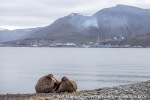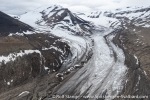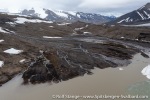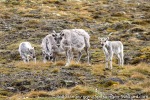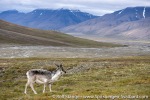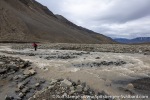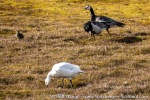-
current
recommendations- Liefdefjord
New page dedicated to one of Spitsbergen's most beautiful fjords. Background information and many photos.
- New Spitsbergen guidebook
The new edition of my Spitsbergen guidebook is out and available now!
- Liefdefjord
New page dedicated to one of Spitsbergen's most beautiful fjords. Background information and many photos.
Page Structure
-
Spitsbergen-News
- Select Month
- June 2025
- May 2025
- April 2025
- March 2025
- February 2025
- January 2025
- December 2024
- November 2024
- October 2024
- September 2024
- August 2024
- July 2024
- June 2024
- May 2024
- April 2024
- March 2024
- February 2024
- January 2024
- December 2023
- November 2023
- October 2023
- September 2023
- August 2023
- July 2023
- June 2023
- May 2023
- April 2023
- March 2023
- February 2023
- January 2023
- December 2022
- November 2022
- October 2022
- September 2022
- August 2022
- July 2022
- June 2022
- May 2022
- April 2022
- March 2022
- February 2022
- January 2022
- December 2021
- November 2021
- October 2021
- September 2021
- August 2021
- July 2021
- June 2021
- May 2021
- April 2021
- March 2021
- February 2021
- January 2021
- December 2020
- November 2020
- October 2020
- September 2020
- August 2020
- July 2020
- June 2020
- May 2020
- April 2020
- March 2020
- February 2020
- January 2020
- December 2019
- November 2019
- October 2019
- September 2019
- August 2019
- July 2019
- June 2019
- May 2019
- April 2019
- March 2019
- February 2019
- January 2019
- December 2018
- November 2018
- October 2018
- September 2018
- August 2018
- July 2018
- June 2018
- May 2018
- April 2018
- March 2018
- February 2018
- January 2018
- December 2017
- November 2017
- October 2017
- September 2017
- August 2017
- July 2017
- June 2017
- May 2017
- April 2017
- March 2017
- February 2017
- January 2017
- December 2016
- November 2016
- October 2016
- September 2016
- August 2016
- July 2016
- June 2016
- May 2016
- April 2016
- March 2016
- February 2016
- January 2016
- December 2015
- November 2015
- October 2015
- September 2015
- August 2015
- July 2015
- June 2015
- May 2015
- April 2015
- March 2015
- February 2015
- January 2015
- December 2014
- November 2014
- October 2014
- September 2014
- August 2014
- July 2014
- June 2014
- May 2014
- April 2014
- March 2014
- February 2014
- January 2014
- December 2013
- November 2013
- October 2013
- September 2013
- August 2013
- July 2013
- June 2013
- May 2013
- April 2013
- March 2013
- February 2013
- January 2013
- December 2012
- November 2012
- October 2012
- September 2012
- August 2012
- July 2012
- June 2012
- May 2012
- April 2012
- March 2012
- February 2012
- January 2012
- December 2011
- November 2011
- October 2011
- September 2011
- August 2011
- May 2011
- April 2011
- March 2011
- February 2011
- January 2011
- December 2010
- November 2010
- September 2010
- August 2010
- July 2010
- June 2010
- May 2010
- April 2010
- March 2010
- February 2010
- November 2009
- October 2009
- August 2009
- July 2009
- June 2009
- May 2009
- April 2009
- March 2009
- February 2009
- January 2009
- December 2008
- November 2008
- October 2008
- August 2008
- July 2008
- June 2008
- May 2008
- April 2008
- March 2008
- February 2008
- April 2000
- Select Month
-
weather information
-
Newsletter

| Guidebook: Spitsbergen-Svalbard |
Home
→ July, 2021
Monthly Archives: July 2021 − News & Stories
In Martin Conway’s footsteps in Bolterdalen
Wed
28 Jul
2021
The Arctic! Spitsbergen! Nature! Being out there! Fantastic …
That the summary 🙂 and that is what it is all about here these days, in and around Longyearbyen. I have spent already far too much time on the computer this year, that has to wait now. Otherwise I could already have written a lot here on my arctic travel blog.
But today is a day of rest, time to catch up a bit.
The presentation series “Arctic Wednesday” was a good opportunity to dig deeper in stories and subjects that are important to me, and the best thing is, of course, to do that in situ. Who remembers my presentation about Martin Conway’s first crossing of Spitsbergen in 1896? (That was online last April, in German).
Now we were following Conway’s footprints at least for a short bit of is path. Conway and his companion Garwood wanted to find a way from Adventdalen to Van Mijenfjord in the south. Due to a lack of geographic information (this lack of knowledge was their reason to get out in the first place, obviously), they started on a route that appears rather absurd today. The whole thing ended up as an impressive forced march until they had found what they were looking for and made it back to their camp in Adventdalen.

Conway and Garwood followed this valley in 1896 to the end, where we can see Reindalen. Hence, they had found a route from Adventdalen to Van Mijenfjord.
We didn’t do a forced march of 40 kilometres, but nevertheless, Bolterdalen has all the pleasures of arctic terrain that one needs for a day of fun: wet tundra for kilometres on end, river crossings and wide, rocky moraine landscape. That’s the Arctic!
The reward comes in shape of a lot of arctic nature, with a colourful flora, curious reindeer – many of them with calves – and petrified wood from the Tertiary.
After our hike, we got back into the car and drove back to Longyearbyen. Conway, in contrast, got back to his camp in pouring rain. One of his two ponies had run away from there and all the way back to Advent Point (today: Adventpynten, near the airport). The poor bear was already tired of the endless snow bogs. One of Conway’s men had to walk all the way back to get the poor animal. Since then, the valley has got its name: Bolter Valley, today Bolterdalen.
Gallery – Bolterdalen
Here a couple of impressions of our day in Bolterdalen, actually starting near Longyearbyen:
- gallery anchor link: #gallery_1973
Click on thumbnail to open an enlarged version of the specific photo.
Farewell to Mark Sabbatini
Most days have been a bit grey and windy recently, but full of joy and good experience outdoors, so time keeps flying. After a long period of abstinence, forced upon me by the pandemic, I enjoy being outside and that’s definitely the focus these days, rather than spending time on the computer. There would be more than enough to write about, stories and pictures from Spitsbergen’s stunning nature, so many beautiful impressions …
But that has to wait right now, we’ll get there later.
Things keep happening also up here in Spitsbergen, and it would be quite out of place to write about being in the outdoors, with stunning scenery, wildlife encounters and interesting “discoveries” of phenomena such as fossils and others, without having written about certain other events first.
Mark Sabbatini left Spitsbergen involuntarily
Especially when it is about someone who had to leave the island after more than 10 years (13, to be more precise). Someone who didn’t have plans to leave.
The power of the Sysselmester, the Norwegian government’s highest representative in Svalbard, includes to expel someone from the islands. This is something that happens rather rarely, for example in cases of persons repeteadly found to have used or even sold illegal drugs, something considered even more dangerous to a relatively young community in the far north, with several months of polar night, than elsewhere in the world.
Also tourists who arrived without any means to support their stay in Spitsbergen have already been sent back on the next flight. The authorities don’t want people to sleep in the streets or to camp wild in or near Longyearbyen, something that is a) forbidden and b) dangerous (polar bears).
So far, so understandable. But someone who has lived here fo 13 years?
Mark Sabbatini: 13 years of Spitsbergen, 13 years of “Icepeople”
The American Mark Sabbatini, per default a newspaper- and media person, had already spent considerable time in places including Antarctica when he came to Longyearbyen 13 years ago and started publishing his free, English newspaper and website “Icepeople”, an alternative media platform next to the local newspaper Svalbardposten and language-wise certainly more accessible to an international public. Since then, Mark has been part of Longyearbyen’s inventory, sitting at a table in a corner of Café Fruene and focussing on his computer while live is busy around him, keeping his newspaper and website updated.
But economically, “Icepeople” never became a source of wealth (something that its editor and author had never primarily intended): paper edition (the “fishwrapper”, as Mark himself calls it) and the website are fully accessible for free, and advertising has never brought much business. The hardest of several economical blows that Mark had to suffer, however, was the Gamle Sykehjem (“Old hospital”) story. This is a long story in itself (click here read more about it). In short words: Mark was one of several who bought a flat in this house which then showed structural damage due to melting permafrost, so it had to be evacuated on short notice and those who had bought a property there suffered more or less a full loss (some more than others, depending on circumstances). Other blows that Mark had to suffer affected his health, including falling and getting hurt badly in times of clear ice on the street in Longyearbyen. This all is well-known local gossip and Mark has never made a secret of it.
Economical and health-wise downhill development
Finally all reserves were used up, and Marks economical situation in the northernmost settlement (if we exclude Ny-Ålesund, which does not have a normal population) of the rich country Norway reached a point where he had increasing difficulties to fund his daily spendings. So it went on for a while. Many did this and that to help, and it went on, with better and more difficult times.
It is one of the consequences of the Spitsbergen Treaty that there is no network for social security beyond what is provided by everybody’s home countries. And as the Norwegian authorities do not accept people living in unsettled situation in Spitsbergen, they reserve the right to expel people from Svalbard who are not economically able to take care of themselves on a level accepted by the authorities.
New Sysselmester Lars Fause has a different viewpoint on this whole question than his precursor, and he decided to “take responsibility” as soon as he came into power recently.
Mark himself has told his view of this story in public a number of times, including Svalbardposten, his own website Icepeople and social media and in personal communication, also to this author. He emphasizes that he does not only understand and accept the Sysselmester’s decision, but he also considers it to be the right decision, in the light of the development in recent years.
Back to Alaska
Mark left Spitsbergen last Wednesday, headed for Juneau in Alaska, where he wants to recover health-wise and economically. Then, he wants to find himself a place in Alaska’s media landscape, preferably with a focus on remote communities.

Mark Sabbatini during his goodbye in Longyearbyen last Wednesday. Photo: Icepeople.
Mark wants to continue with Icepeople, so the page will be active and updated also in the future, supplying an international public with interest in local matters with all sorts of detailed information, presented in Mark’s own way, often with a touch of humour and written in a style that may occasionally be slightly challenging for non-native English speakers.
By the way, Mark has contributed with proofreading to a number of texts used in various publications, print and online, by this author, including shorter texts such as quite recently in Svalbardhytter or longer ones including updates of the English version of the guidebook Spitsbergen-Svalbard. According to Mark, he will be happy to make similar contributions also in the future, something I’ll be happy to make use of (as a paid service, as before)
If you want to read more about the circumstances of Mark’s departure, then you will find plenty of stuff on his own site, Icepeople.
So long for now, Mark! See you again!
Adventure Oslo airport. And: the answer
The Svalbardbutikken mystery
To start with, the answer to the question in the last blog. It was about this photo:

A corner in Svalbardbutikken, Longyearbyen’s refurbished supermarket.
$64-question for Spitsbergen-nerds: what’s wrong here? 🙂
So, what is wrong? Obviously, it wasn’t really obvious 🙂 the photo on the wall is mirror-inverted. They say they will get a corrected version at some stage.
Adventure Oslo airport
Spending a couple of hours in an airport is pretty much the most boring thing that I can think of. why write about it? Because it can go wrong if you expect it to work as normal.
Test or no test, that is the question
The question keeps coming up wether or not corona testing is required on a trip to Spitsbergen. The current situation is that immunised travellers (fully vaccinated or recently recovered, documented with an acknowledged document such as a digital European vaccination certificate) do not have to show a certificate for a negative test upon entering Norway or checking in on a flight to Spitsbergen. That may change at any time, as everything these days; authorities including the Sysselmester have already demanded to re-introduce the test obligation.
In my experience, it is an increasing risk that you can’t necessarily rely on governemt decisions especially when things are changing more or less every week. Then it’s whatever the airport official you are dealing with thinks. What use is in being right if you don’t get any further with is? An non-Corona-example: legally, as a EU citizen you don’t need a passport to travel from Norway to Spitsbergen, an ID card will do. But at the airport they demand a passport from non-Norwegians. Additionally, machines like automatic check-in machines or automated passport control machines can only read passports and not ID cards, so you are well advised to bring your passport anyway.

Digital EU-vaccination certificate: makes the process more efficient in Oslo Gardermoen.
But not necessarily efficient.
So, back to the initial question: currently, testing is not required under the above-mentioned conditions. But it may still be a good idea to have enought time to get one, just in case. There are testing facilities at Oslo Gardermoen airport, but you may need a couple of hours until you get the certificate, depending on traffic. And, according to Svalbardposten, the corona test station at Tromsø airport accepts only travellers coming in from international flights, but not outgoing ones destined for Svalbard. Those have to use equivalent services in Tromsø centre. Next to the extra time, expect costs of 1500 kroner (plus transportation) unless you are a registered resident in Spitsbergen, then it is free.
Adventure Oslo airport: travel information
The usual two hours from arrival at Oslo Gardermoen airport until departure may be enough when it’s early in the morning. Or maybe not. It is bizarre how rapidly the queues are getting longer and longer until they reach amazing dimensions. Last weekend, one could get the impression that they are discussing testing requirements in detail with every single passenger before you could continue to the actual check-in area. For us, with destination Longyearbyen and fully vaccinated, it was a very short conversation – “have a good trip” was the only comment as soon as we had provided our information. But getting that far is the point, and it takes much, much longer for many other flight passengers, and you may have hundreds in the queue ahead of you. From then on, the process was actually reasonably efficient (security check, passport control). Luckily.

An empty airport Oslo Gardermoen: that’s history!
According to Norwegian media, travellers have recently spent up to 8 hours queuing up in the airport of Oslo Gardermoen, missing their flights and everything that comes with that (forget about social distancing!). In the interest of all travellers, we can only hope that they improve the logistics significantly soonest. Anyway, if you plan to travel through Oslo at any time soon, make sure to have extra time.
And make sure to have even more time if you are not fully vaccinated or don’t have an accepted document for this.
Finally … Spitsbergen!
Mon
12 Jul
2021
Finally – Spitsbergen! That has been a long, long dry spell … but now we are back in Longyearbyen, keen and full of ideas and plans. Let’s see what the next weeks and months will bring.
If you want to fly anywhere from Oslo, make sure you have got enought time in Oslo Gardermoen. The queues can really be very long, and it is not a very efficient process.
And you should also plan some extra time when you go into Svalbardbutikken, Longyearbyen’s supermarket. It is kind of twice the size it used to be. But not everything is perfect (yet) …

A corner in Svalbardbutikken, Longyearbyen’s refurbished supermarket.
$64-question for Spitsbergen-nerds: what’s wrong here? 🙂
Some first little impressions from Oslo and Longyearbyen:
Finally – Spitsbergen! Ein paar erste, kleine Eindrücke, Longyearbyen und nähere Umgebung
- gallery anchor link: #gallery_1970
Click on thumbnail to open an enlarged version of the specific photo.
Van Mijenfjord: new national park
It has been a long process, hence it did not come as a surprise when the new Van Mijenfjord national park was established by law on 18 June. The new national park includes the northern part of Van Keulenfjord and adjoins the South Spitsbergen Nationalpark. As a result, the whole southern part of the main island of Spitsbergen from southern Nordenskiöld Land (the land area between Isfjord and Van Mijenfjord) is now protected on national park level.

Inner Van Mijenfjord in late May: now a national park.
Successor of the Nordenskiöld Land national park
The Van Mijenfjord national park is the amplified successor of Nordenskiöld Land national park which was established in 2003, but restricted to a land area on the north side of Van Mijenfjord. There have been changes since 2003 that have made the adjustment necessary, including the large clean-up of the former mining settlement of Sveagruva. Another aspect that needed proper regulation were the regular requests by the Sysselmannen (now Sysselmester) who asked the public to stay clear of certain sensitive areas during the late spring and eary summer, but without a precise definition of the area and time interval in question and the legal bindingness, leaving room for doubt for those who were operating in the area. This is now regulated beyond any grey zone potential. Yet another aspect is motorised traffic (snow mobiles) on fjord ice. Also here, the Sysselmannen has spoken out bans on such traffic on a regular basis. Including these bans which were spoken out on an annual basis in a permanent law makes it easier to know what one has to deal with. The details of some of these regulations are of course at least in part controversial; the government has chosen a very extensive and strict approach to the ban on motorised traffic, something that not all local tour enthusiasts in Longyearbyen are happy with as the opportunities to visit the south part of the main island are now strongly restricted. It is definitely important to some people, but their number is actually limited as even in Longyearbyen there are not too many people adventurous (and interested) enough to venture on long trips into these areas, far from the common routes. There were no snow mobile routes of relevance for tourists in the area in question.
Three new bird sanctuaries, snow mobile traffic strongly restricted

The new Van Mijenfjord national park (green boundary). Yellow dots: new bird sanctuaries. Red area: motorised traffic on fjord ice restricted (see text). Shaded area: total ban on motorised traffic on fjord ice.
Map © Norwegian Polar Institute / Sysselmester på Svalbard, modified.
Generally, the new Van Mijenfjord national park law includes the same regulations that apply to all national parks. Beyond these, following rules of practical importance for locals and tourists include the following:
- Midterhuken, Eholmen and Mariaholmen are now bird sanctuaries and it is forbidden to approach these areas or to move within them from 15 May to 15 August. Click here to access a map that shows the exact locations of these new bird sanctuaries.
- Snow mobiles and other motorised traffic on the fjord ice of Van Mijenfjord and Van Keulenfjord are now largely restricted every season from 01 March. Only registered locals are allowed to cross the fjord ice of parts of Van Mijenfjord on the shortest safe route, while other areas are now completely off limits for this kind of traffic from 01 March. Click here to access a map that shows the areas in detail. Non-motorised traffic (ski, dog sledge) remains legally possible within the usual legal framework.
- The core area o the former mining settlement of Sveagruva is excluded from the national park. Here, extensive clean-up works will continue for another while until most of the settlement is removed.
News-Listing live generated at 2025/June/15 at 07:14:28 Uhr (GMT+1)


